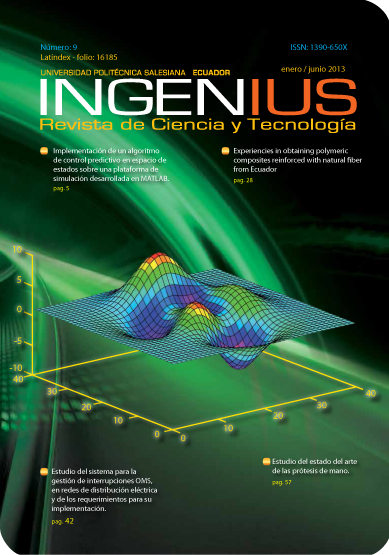Business models for OMV in Ecuador
Main Article Content
Abstract
Article Details
The Universidad Politécnica Salesiana of Ecuador preserves the copyrights of the published works and will favor the reuse of the works. The works are published in the electronic edition of the journal under a Creative Commons Attribution/Noncommercial-No Derivative Works 4.0 Ecuador license: they can be copied, used, disseminated, transmitted and publicly displayed.
The undersigned author partially transfers the copyrights of this work to the Universidad Politécnica Salesiana of Ecuador for printed editions.
It is also stated that they have respected the ethical principles of research and are free from any conflict of interest. The author(s) certify that this work has not been published, nor is it under consideration for publication in any other journal or editorial work.
The author (s) are responsible for their content and have contributed to the conception, design and completion of the work, analysis and interpretation of data, and to have participated in the writing of the text and its revisions, as well as in the approval of the version which is finally referred to as an attachment.
References
D. N. de Planeación de Colombia (DPN), IMOBIX, and I. en Telecomunicaciones (ITC), “Reporte 1. analizar las condiciones técnicas, económicas, de mercado y de impacto de la implementación de operadores móviles virtuales en Colombia. características, conceptos generales y modelos de mercado,” Colombia, Programa de apoyo al proceso de participación privada y concesión en infraestructura Tercera Etapa, 2011. [Online]. Available: https://www.dnp.gov.co/LinkClick.aspx? fileticket=6br5UAspLlU%253D&tabid=1255
M. Jara, “Establecimiento de las condiciones técnicas y regulatorias que permitan el ingreso de operadores móviles virtuales en el mercado de los servicios móviles avanzados del Ecuador,” Proyecto de graduación, Escuela Politécnica Nacional, Quito, Ecuador, 2009.
CONATEL, “Proyecto de reglamento para la prestación del servicio móvil avanzado a través de prestadores móviles virtuales,” p. 10, 2002. [Online]. Available: http://www.conatel.gob.ec
——, “Reglamento para la prestación del servicio móvil avanzado,” 2002. [Online]. Available: http://www.conatel.gob.ec
Asamblea Constituyente. (2008) Constitución del Ecuador. República del Ecuador. Quito, Ecuador.
Prepaidmvno, 2013. [Online]. Available: www.prepaidmvno.com
Telecompaper, 2013. [Online]. Available: www.telecompaper.com
R. Copeland and N. Crespi, “Modelling MultiMNO business for MVNO in their evolution to LTE, VoLTE & advanced policy,” in Intelligence in Next Generation Networks (ICIN), Octubre 2011, pp. 295–300.
CONATEL. Infraestructura del sector de telefonía móvil SMA - densidad del servicio. Ecuador. [Online]. Available: http://www.conatel.gob.ec/
Instituto Nacional de Estadísticas y Censos (INEC). (2013) Los usuarios de teléfonos inteligentes (smartphone) se incrementaron en un 60 %. Ecuador. [Online]. Available: http://www.inec.gob.ec
M. P. De Leon, T. Software, and S. Group, “A user centric always best connected service business model for MVNOs,” pp. 1–8, 2010.
R. Copeland and N. Crespi, “Resolving ten MVNO issues with EPS architecture, VoLTE and advanced policy server,” in Intelligence in Next Generation Networks (ICIN), October 2011, pp. 29–34.
L. Mastroeni, M. Naldi, and S. Member, “Spectrum reservation option for mobile virtual network operators,” in 6th EURO-NF Conference on Next Generation Internet NGI , 2010, pp. 1–8.

